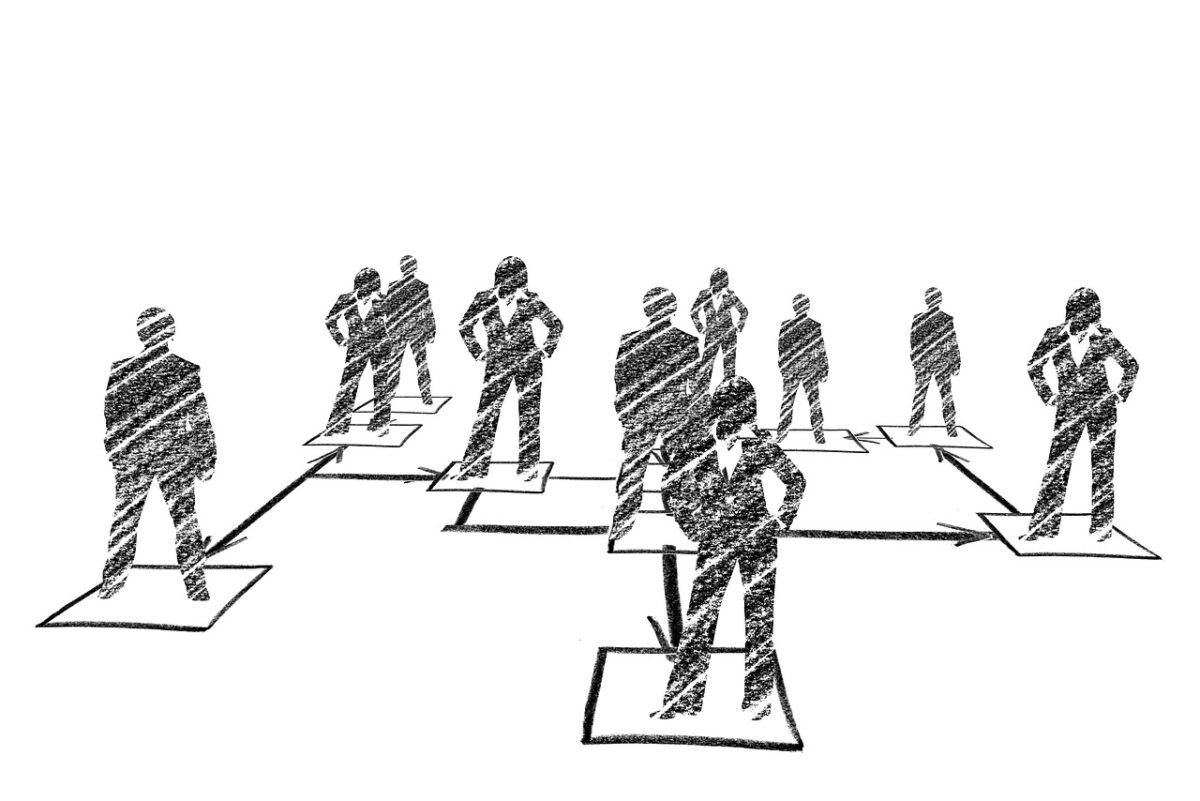The Difference Between A Job Description And A Job Advert

Navigating the recruitment process can be a complex endeavour for any business, with the ultimate goal of attracting the best candidates to your team. Understanding the distinction between a job description and an advert and how these separate documents serve unique purposes is crucial in this journey. A job description provides a detailed overview of the role’s requirements, qualifications, and skills needed, serving as an internal benchmark for both the employer and potential employees. In contrast, a job advert is crafted to market the position and the company to prospective applicants, highlighting the opportunities and benefits of joining the business. This blog explores the nuances of job spec versus advert, offering insights into how businesses can effectively use both to attract top talent and streamline their recruitment process.
Quick Links:
- Understanding Job Descriptions
- Demystifying Job Adverts
- The Key Differences
- Leveraging Templates And Libraries
- Job Descriptions Vs Job Adverts FAQs
Highlights And Key Takeaways:
- Most job descriptions provide potential job seekers with a clear outline of what a role entails, ensuring clarity and compliance with employment law.
- A job ad is a promotional tool designed to inform and entice applicants.
Understanding Job Descriptions

Crafting a good job description is foundational to attracting the right talent and setting the stage for successful recruitment. Most job descriptions serve a dual purpose: they provide potential job seekers with a clear outline of what a role entails and establish essential criteria job descriptions must include to ensure clarity and compliance with employment law.
Key Components of a Job Description
A good job description should be comprehensive yet concise, covering several key components to attract the right candidates. Firstly, it must include a clear job title that accurately reflects the role and its level within the organisation. A brief overview of the position, highlighting its purpose and significance in the company, sets the stage for deeper insights. Essential duties and responsibilities should be listed next, followed by qualifications and skills.
Including details about the work environment and any physical demands of the job can help job seekers gauge their suitability and interest. Lastly, it’s beneficial to mention the reporting structure to give candidates an understanding of their potential place within the organisational hierarchy and their key internal relationships.
Essential points to consider when preparing job descriptions, include:
- Essential Criteria and Clarity: A list of essential criteria is at the core of any good job description. These criteria specify the qualifications and experience required and highlight soft skills and competencies, such as great communication abilities, critical for the role. Including these fine details helps candidates assess their suitability for the position, ensuring that those who apply meet the foundational requirements.
- Avoiding Ambiguity: One common pitfall to avoid is the inclusion of internal jargon or internal buzzwords that outside candidates may need help understanding. Such language can obscure the true nature of the role, deterring potentially excellent candidates who might need to recognise the terminology. Clear, accessible language ensures the widest possible range of applicants can see themselves in the role.
- The Importance of Soft Skills: While detailing technical skills and qualifications is straightforward, articulating the value of soft skills can be more nuanced. A great job description goes beyond the hard skills to emphasise interpersonal qualities, such as great communication abilities. These are increasingly recognised as essential for effective teamwork and leadership, making them critical components of most job descriptions.
- Legal Considerations: Another key aspect of crafting a job description is adherence to employment law. It’s imperative to ensure that all requirements are non-discriminatory and equitable, offering equal opportunities to all potential applicants. This consideration protects the employer and promotes a diverse and inclusive workplace culture.
In conclusion, a well-crafted job description is a pivotal recruitment tool. It bridges the gap between the employer’s needs and the aspirations of job seekers, ensuring a clear, comprehensive, and lawful portrayal of the role. By avoiding ambiguity, emphasising soft skills alongside technical requirements, and adhering to legal standards, employers can attract a diverse and qualified pool of candidates, setting the foundation for recruitment success.
Further Exploration
Several resources are available for those looking to delve deeper into crafting effective job descriptions. The blog How To Write A Job Description offers a comprehensive guide, walking through each step of the process to ensure clarity and compliance. Meanwhile, What Is A Job Specification? provides insight into how job specifications complement job descriptions by detailing a candidate’s specific attributes. Lastly, What To Include In A Job Description breaks down the critical components that should be covered, ensuring everything essential is noticed. Need further guidance? Begin with Job Descriptions: A Simple Definition.
Demystifying Job Adverts

The world of recruitment is awash with terms like job ad, job advertisement, and job postings, often used interchangeably but central to a Hiring Manager’s arsenal in attracting talent. Understanding the nuances of a well-crafted job advertisement can be the difference between drawing in a pool of qualified candidates and having your vacancy overlooked on a crowded job board.
Job Ad Definition and Objective
At its core, a job ad is a promotional tool designed to inform and entice applicants. Unlike a job description, which is detailed and focused on the specifics of the role, an actual job advert aims to sell the position and the company to potential candidates. It’s about capturing the essence of the opportunity and the organisation in a way that resonates with the right candidate.
Essential points to consider when preparing job ads, include:
- Key Elements: A compelling job advertisement should briefly highlight the role, key responsibilities, and qualifications needed, borrowing from the job description but framing these elements more engagingly. It should articulate the company culture and the benefits of joining the team, aiming to connect on a level that goes beyond just the job specifications. Including specifics about the location, salary range, and unique perks can make your ad stand out on job boards and social media.
- Crafting an Effective Job Advert: The art of crafting an effective job advert lies in its ability to sell the position to the right candidate. It should be concise yet descriptive, professional yet personable, and, above all, aligned with the brand’s voice and values. The goal is to create a compelling narrative that attracts candidates and drives them to action – applying for the job. A well-thought-out call to action (CTA) is crucial, guiding potential applicants on the next steps, whether submitting a CV, filling out an application form, or contacting the Hiring Manager.
- The Strategic Placement of Job Adverts: The placement of job advertisements is as critical as their content. Job boards are popular, but social media platforms, professional networks, and industry-specific forums can also provide valuable exposure. Diversifying the channels used to post job adverts maximises visibility and increases the chances of reaching the ideal candidates, wherever they may be.
- Enticing Applicants: To truly entice applicants, a job advert must resonate personally, appealing to candidates’ aspirations and career goals. It should paint a vivid picture of what it’s like to work at the company and the potential for growth and development. This emotional engagement sets apart an effective job advertisement from simply listing requirements.
In summary, demystifying job adverts involves understanding their purpose as a tool to attract, engage, and convince potential candidates that your company is their next best career move. By thoughtfully crafting and strategically placing your adverts, you can significantly enhance your recruitment outcomes, securing the talent to drive your organisation forward.
For more insights into creating impactful job adverts that attract the right talent, consider exploring How To Write A Job Advert. This resource provides a deeper dive into the strategies and best practices that can elevate your recruitment efforts, ensuring that your vacancies capture the attention of high-calibre candidates.
The Key Differences

Navigating the recruitment landscape, many Hiring Managers find themselves juggling various documents and terminologies, particularly when understanding the nuances between a job post and a job description. While both are crucial in the hiring process, their purposes, content, and impact on potential candidates vary significantly. Here, we delve into the main differences, highlighting how job adverts sell the opportunity and engage with the job seeker. In contrast, job descriptions provide foundational detailed information for applicants and current employees.
- Purpose and Audience: A job advert is a marketing tool designed to attract candidates, engage candidates, and entice applicants to a job opening. It speaks directly to the job seeker, selling the role and the company appealingly and compellingly. The primary aim is to spark interest and prompt action – encouraging candidates to apply. On the other hand, a job description serves as a separate document that outlines the role’s essential requirements, duties, and responsibilities in detail. It is used not only for recruitment purposes but also as a reference for performance reviews and career development discussions within the organisation.
- Content and Focus: Job adverts sell the position and the company culture, focusing on what makes the company a great workplace. They highlight the benefits, opportunities for growth, and the new hire’s impact, making the role and the organisation as attractive as possible. Job adverts are more about persuasion, using engaging language to entice applicants and showcase the company’s unique selling points. Conversely, a job description provides detailed information about the role itself, including specific tasks, qualifications needed, and the experience required. It is more factual and detailed, serving as a guideline for the job seeker and the employer to clearly understand the role’s expectations. It typically includes the job title, duties, skills, and qualifications necessary, focusing on the essential requirements for performing the job successfully.
- Utility and Longevity: The utility of a job post extends beyond merely filling a current job opening; it plays a crucial role in building the employer brand and attracting potential talent to the company’s talent pool. It’s crafted to capture the essence of the company and the excitement of joining the team, aimed at a wide audience to maximise the application pool. Job descriptions, in contrast, have a longer lifespan and serve multiple purposes within the HR framework. They are instrumental in the hiring process but also play a vital role in employee management, serving as a reference point for performance reviews, setting expectations, and aligning roles with organisational goals.
Example and Further Exploration
For instance, a job advert might highlight the opportunity to join a tech company’s innovative, fast-paced team, promising exciting growth opportunities and a vibrant company culture. A job description for the same role would list the specific programming languages required, years of experience, and daily tasks such as code reviews and product development meetings.
For those seeking to further understand these distinctions and how they play out in real-world recruitment, the blog What Is The Difference Between A Job Specification And A Job Description? offers valuable insights. It breaks down related concepts and clarifies how each document fits into the broader recruitment and employee management strategies.
Recognising the main differences between a job post and a job description is crucial for effective recruitment. While job adverts market the role and the company to attract candidates, job descriptions offer a comprehensive overview of the role’s requirements, serving as a cornerstone for various HR processes. These documents create a holistic approach to attracting, hiring, and managing talent.
Leveraging Templates And Libraries

In today’s fast-paced recruitment landscape, leveraging customisable pre-written job descriptions and templates for job descriptions and adverts significantly streamlines the hiring process. These resources offer a foundational framework that saves Hiring Managers considerable time, eliminating the need to start from scratch for each new role. Designed to be flexible, these templates allow for easy adjustments to suit the specific demands of the job and the organisation’s culture while ensuring that no critical information is missed. This approach not only accelerates the creation of recruitment materials but also upholds a high standard of consistency and quality across all communications.
Furthermore, the use of these pre-prepared documents aids in maintaining a cohesive brand image and ensures adherence to employment law and recruitment best practices. Regular template updates reflect the latest regulatory requirements and industry trends, providing an invaluable compliance safeguard for businesses, particularly smaller enterprises or startups, without dedicated HR or legal teams. By streamlining document creation and fostering a professional, consistent brand presentation, these resources empower organisations to focus on strategic recruitment efforts – such as enhancing candidate engagement and optimising the selection process – thereby attracting and securing top talent more effectively.
Our recruitment resources freely available to employers and HR professionals, include:
- Job Description Template
- Job Advert Template
- Job Description Library
- Interview Resources
- Job Offer Template
- Contract Of Employment Template
Job Descriptions Vs Job Adverts FAQs

Here we answer the questions of Hiring Managers and HR professionals on the differences between a job ad and a job description:
WHAT IS THE DIFFERENCE BETWEEN A JOB DESCRIPTION AND A JOB LISTING UK?
A job description is a detailed document that outlines the responsibilities, duties, qualifications, and skills required for a specific role within an organisation. It serves as an internal document designed to provide clarity to both the employer and the employee regarding the expectations and requirements of the role.
On the other hand, a job listing is a public advertisement intended to attract applicants to a vacancy. It typically includes a summary of the job description, key responsibilities, and requirements but also incorporates information on the company culture, benefits, and the application process. The job listing is designed to be engaging and persuasive, encouraging potential candidates to apply.The role description in a new advert is a concise summary of the position offered. It provides potential applicants with essential information about what the job entails, including key responsibilities, daily tasks, and the goals that the role aims to achieve within the organisation. This description is crafted to give candidates a clear understanding of what the job involves and how it fits into the wider company structure, helping them assess if they are a good fit for the role and the organisation.
A job advert is a public announcement by an employer designed to inform potential candidates about a job vacancy and to attract a wide range of qualified applicants. It typically includes the role description, key requirements (such as skills, qualifications, and experience), information about the company, and details on how to apply. A well-crafted job advert outlines the vacancy and highlights the employer’s brand, culture, and the benefits of working for the organisation. It aims to engage and motivate potential candidates to submit their applications.
While the terms job description and position description are often used interchangeably in the UK, they can denote subtle differences. A job description provides a general overview of a role, including the duties, responsibilities, qualifications, and skills required for a job category or family. It is more about the nature of the work itself than the individual performing it.A position description tends to be more specific. It may detail a role’s particular responsibilities and expectations within the organisational structure, including reporting lines and performance objectives. It often pertains to the unique aspects of the position, including any specific projects or objectives that the incumbent is expected to achieve.In essence, while a job description offers a broad overview of a role, a position description provides a detailed and personalised account of a job as it relates to the organisational context and the individual occupying the role.These distinctions and definitions are crucial for Hiring Managers and employers as they navigate the recruitment and selection process, ensuring clarity, precision, and effectiveness in attracting the right talent to their organisation.



